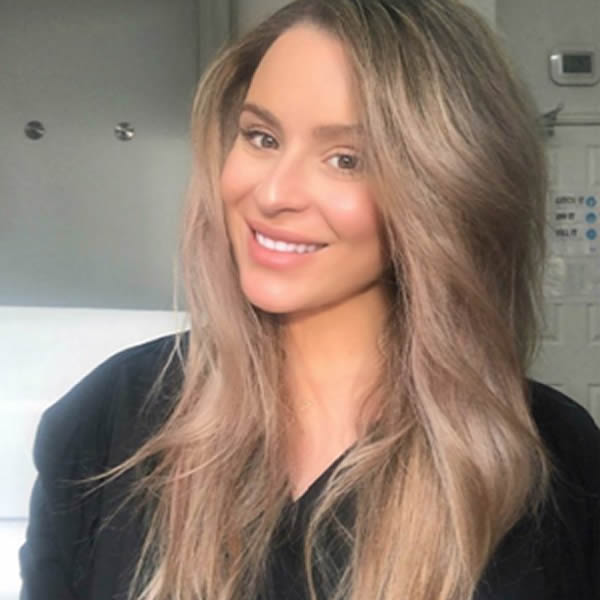Vaginal Prolapse Problems
Vaginal Prolapse Overview
Approximately 30%-40% of women develop some presentation of vaginal prolapse in their lifetime, usually after the menopause, childbirth, or a hysterectomy. Most women who develop this condition are older than 40 years of age. Many women who develop symptoms of a vaginal prolapse do not seek medical help because of embarrassment or other reasons. Some women who develop a vaginal prolapse do not experience symptoms
The network of muscles, ligaments, and skin in and around a woman’s vagina acts as a complex support structure that holds pelvic organs, and tissues in place. This support network includes the skin and muscles of the vagina walls (a network of tissues called the fascia). Various parts of this support system may eventually weaken or break, by stretching causing a very common condition called vaginal prolapse. In vaginal prolapse, structures such as the uterus, rectum, bladder, urethra, small bowel, or the vagina itself may begin to prolapse, bulge or fall out of their normal posi tions. Without medical treatment or surgery, these structures may eventually prolapse farther and farther into the vagina or even through the vaginal opening if their supports weaken enough. The symptoms that result from vaginal prolapse commonly affect sexual function as well as bodily functions such as urination and defecation. Pelvic pressure and discomfort are also common symptoms. The following are types of vaginal prolapse:
Rectocele (Prolapse of the Wall of the Rectum); This type of vaginal prolapse involves a prolapse of the back wall of the vagina (rectovaginal fascia). When this wall weakens, the rectal wall pushes against the vaginal wall, creating a bulge. This bulge may become especially noticeable during bowel movements. This is not the same as rectal prolapse, where inside surface wall of the rectum bulges through the back passage or anus.
Cystocele (Prolapse of the Bladder, bladder drop): This can occur when the front wall of the vagina (pubocervical fascia) prolapses. As a result, the bladder may prolapse into the vagina. When this condition occurs, the urethra often prolapses as well (urethrocele). When both the bladder and urethra prolapse, this condition is known as a cystourethrocele. Urinary Stress Incontinence (urine leakage during coughing, sneezing, exercise, etc) is a common symptom of that is associated with cystocele, but is not primarily the reason for the stress incontinence.
Enterocele (Vaginal Herniation of Small Bowel): The weakening of the upper vaginal supports can cause this type of vaginal prolapse. This condition primarily occurs following a hysterectomy, but can occur in the presence of intact uterus, but does usually cause concerns – apart from stretched upper vagina – when the uterus is present. An enterocele results when the back walls of the vagina separate, allowing the intestines to push against the vaginal skin.
Prolapsed Uterus – Uterine (womb) Prolapse: This involves a weakening of a group of ligaments called the uterosacral ligaments at the top of the vagina. This causes the uterus to fall, which commonly causes both the front and back walls of the vagina to weaken as well. The following are stages of uterine prolapse:
- First-degree prolapse: The uterus droops into the upper portion of the vagina.
- Second-degree prolapse: The uterus falls into the lower part of the vagina.
- Third-degree prolapse: The cervix, which is located at the bottom of the uterus, sags to the vaginal opening and may protrude outside the body.
- Fourth-degree prolapse: The entire uterus protrudes entirely outside the vagina. This condition is also called procidentia, or complete prolapse
Vaginal vault prolapse: This type of prolapse may occur following a hysterectomy, which involves the removal of the uterus, because the uterus provides support for the top of the vagina. Up to 10% of women develop a vaginal vault prolapse after undergoing a hysterectomy. In vaginal vault prolapse, the top of the vagina gradually falls toward the vaginal opening. This may cause the walls of the vagina to weaken as well. Eventually, the top of the vagina may protrude out of the body through the vaginal opening, effectively turning the vagina inside out. A vaginal vault prolapse often accompanies an enterocele.
Causes of Vaginal Prolapse
A network of muscles provides the main support for the pelvic viscera (the vagina and the surrounding tissues and organs within the pelvis). This network of muscles, which is located below most of the pelvic viscera and supports the viscera’s weight, is called the levator ani. Pelvic ligaments provide additional stabilizing support. When parts of this support network are weakened or damaged, the vagina and surrounding structures may lose some or all of the support that holds them in place. Collectively, this condition is called pelvic floor relaxation. A vaginal prolapse occurs when the weight – bearing or stabilizing structures that keep the vagina in place weaken or deteriorate. This may cause the supports for the rectum, bladder, uterus, small bladder, urethra, or a combination of them to become less stable. Common factors that may cause a vaginal prolapse include the following:
Childbirth (especially multiple births): Childbirth is stressful to the tissues, muscles, and ligaments in and around the vagina. Long, difficult labors and large babies are especially stressful to these structures. Childbirth is the risk factor most commonly associated with cystoceles, in which the bladder prolapses into the vagina.
Menopause: Estrogen is a hormone that helps to keep the muscles and tissues of the pelvic support structure strong. After menopause, the estrogen level decreases; this means that the support structures may weaken.
Hysterectomy: The uterus is an important part of the support structure at the top of the vagina. A hysterectomy involves removing the uterus. Without the uterus, the top of the vagina may gradually fall toward the vaginal opening. This condition is called a vaginal vault prolapse. As the top of the vagina droops, added stress is placed on other ligaments. Hysterectomy is also commonly associated with an enterocele, in which the small bladder herniates near the top of the vagina.
Other risk factors of a vaginal prolapse include the following:
- Long-term Constipation
- Obesity
- Dysfunction of the nerves and tissues
- Abnormalities of the connective tissue
- Prior pelvic surgery
Vaginal Prolapse Symptoms
The symptoms associated with a vaginal prolapse depend on the type of vaginal prolapse present. The most common symptom of all types of vaginal prolapse is the sensation that tissues or structures in the vagina are out of place. Some women describe the feeling as “something coming down” or as a dragging sensation. This may involve a protrusion or pressure in the area of the sensation. Generally, the more advanced the prolapse, the more severe the symptoms.
The following are general symptoms of all types of vaginal prolapse:
- Pressure in the vagina or pelvis
- Discomfort With Intercourse, rather than Pain
- A lump at the opening of the vagina
- A decrease in pain or pressure when the woman lies down
- Recurrent urinary tract infections
The following are symptoms that are specific to certain types of vaginal prolapse:
Difficulty emptying bowel: This may be indicative of an enterocele, vaginal vault prolapse, or prolapsed uterus. A woman with difficulty emptying her bowel may find that she needs to place her fingers on the back wall of the vagina to help evacuate her bowel completely. This is referred to as splinting or vaginal digitation. Constipation: This is the most common symptom of a rectocele.
Difficulty emptying bladder: This may be indicative of a cystocele, urethrocele, enterocele, vaginal vault prolapse, or prolapsed uterus.
Urinary stress incontinence: This is a common symptom associated with a cystocele.
Discomfort that increases during long periods of standing: This may be indicative of an enterocele, vaginal vault prolapse, or prolapsed uterus.
Protrusion of tissue at the back wall of the vagina: This is a common symptom of a rectocele.
Protrusion of tissue at the front wall of the vagina: This is a common symptom of a cystocele or urethrocele or both.
Enlarged, wide, and gaping vaginal opening: This is a common symptom of a vaginal vault prolapse.Some women who develop a vaginal prolapse do not experience symptoms.
When to Seek Medical Care
Any woman who experiences symptoms that may indicate a vaginal prolapse should contact her doctor. A vaginal prolapse is rarely a life-threatening condition. However, most prolapses gradually worsen and can only be corrected with intravaginal pessaries or surgery. Thus, timely medical care is recommended to evaluate for and to prevent problematic symptoms and complications caused by weakening tissue and muscle in the vagina.
Vaginal Prolapse Diagnosis
Generally, the most reliable way that a doctor can make a definite diagnosis of any type of vaginal prolapse involves a medical history and physical examination of the woman. This involves the doctor examining each section of the vagina separately to determine the type and extent of the prolapse and what type of treatment is most appropriate.
During the physical examination, the woman may need to sit in an upright position and strain so that any prolapsed tissues are more likely to become apparent. The following are tests that the doctor may use to evaluate women with advanced vaginal prolapse. Although the diagnosis is usually very clear after examination, these women also often have urinary incontinence, therefore they may also be investigated along these lines. Those further tests of the pelvic floor ansd incontinence many include:
Q-tip test: In this diagnostic test, the doctor inserts a small cotton-tipped applicator lubricated with an anesthetic gel into the woman’s urethra. The doctor then asks the woman to strain down. If the applicator raises 30 degrees or more as a result, this means that the urethra – bladder neck drops while straining and is a predictive factor of success of anti -incontinence surgery.
Bladder function test: This involves a diagnostic procedure called urodynamics. This tests the ability of the bladder to store urine and to dispose of it (urinate). The first step of this test is called uroflowmetry, which involves measuring the amount and force of the urine stream. The second step is called a cystometrogram. In this step, a catheter is inserted into the bladder. The bladder is then filled with sterile water. The volume at which the patient experiences urgency and fullness are recorded. The pressures of the bladder and urethra are measured and the patient is asked to cough or bear down to elicit leakage with the prolapse pushed up (reduced). This is important clinical information that may assist the surgeon in selecting the correct type of surgery.
Pelvic floor strength: During the pelvic examination, the doctor tests the strength of the woman’s pelvic floor and of her sphincter muscles. The doctor also assesses the strength of the muscles and ligaments that support the vaginal walls, uterus, rectum, urethra, and bladder. These findings help the doctor determine if the woman would benefit from exercises to restore the strength of the muscles of the pelvic floor (for example, Kegel exercises). The doctor occasionally be also request the following if felt necessary.
- Magnetic resonance imaging (MRI) scan
- Ultrasound of the Pelvis and if necessary also that of the bladder and the anal passage.
Cystourethroscopy: A cystoscope, which is a small, tubelike instrument, is lubricated with an anesthetic gel and inserted into the urethra. The end of the cystoscope has a light and camera, which produces images on a television screen. With this procedure, the doctor can view inside the urethra and bladder. This procedure is especially valuable for women who have symptoms of urinary urgency, frequency, bladder pain, or blood in the urine.









Leave a Reply
Want to join the discussion?Feel free to contribute!